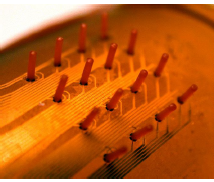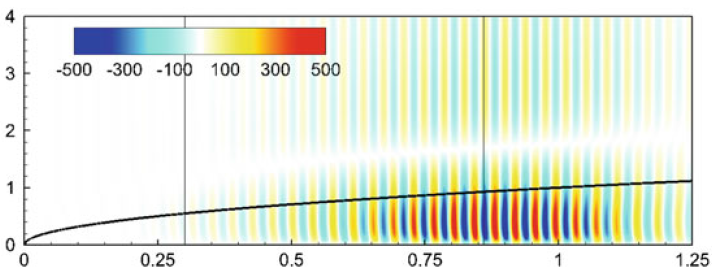A post-doctoral position is opened in the AEROFLEX projet, starting from January 2018 for a duration of 12 months, to investigate the interaction of boundary-layer flow instabilities with flexible pillars


A post-doctoral position is opened at ONERA The French Aerospace Lab, in the Department of Aerodynamics, Aeroelasticity and Acoustic, for duration of 12 months. The successful applicant will integrate a research team funded by the European Research Council and investigating the modelling and control of aeroelastic instabilities, which are at the origin of large deformations of structures.
The mathematical modelling of aeroelastic instabilities is based in this project on the linearization of the coupled fluid/elastic equations written in an Arbitrary Eulerian Lagrangian description, where the fluid is modelled by the incompressible Navier-Stokes equations while the elastic hyperelastic material is modelled by the Saint-Venant Kirchoff equations. Numerical tools based on a finite element spatial discretization of these two equations have been developed so far to investigate the long-term temporal behaviour of linear fluid-solid perturbations [1] and the frequency response of solid vibrations to flow perturbations [2,3], the so-called resolvent analysis.
The present project is concerned by the dynamic response of micro-pillars (shown in the left figure [4]) placed in a laminar boundary layer flow. Depending on their height, stiffness and (few) numbers, the pillars bend and recirculation flow regions of various spatial extents will form downstream. A parametric investigation of two-dimensional configurations will be performed to determine the static response of the pillar to the steady laminar incoming boundary layer flow. Using the fluid-solid resolvent analysis, the (linear) dynamic response of the pillars to flow perturbations will be examined. In particular, we will consider frequency range for which Tollmien-Schlichting waves (shown in the right figure) and Kelvin-Helmholtz perturbations are amplified in the incoming boundary layer and the shear layer of the downstream recirculation region, respectively. The resolvent analysis will be performed so as to determine the flow perturbations that lead to the largest pillars vibrations. The competition between the Kelvin-Helmholtz and Tollmien-Schlichting flow perturbations and their effect on the pillars dynamics will be thus be investigated.
To extend this investigation to a three-dimensional configuration, numerical development will be necessary. In particular, the candidate will work in collaboration with two PhD students who developed efficient preconditioners for solving iteratively the stability of two-dimensional fluid-solid configurations on one side, and the stability of three-dimensional flow configuration on the other side. The candidate is expected to merge these numerical tools to obtain an efficient iterative parallel solver for the resolvent analysis of three-dimensional fluid-structure configurations.
To apply for this post-doctoral position, candidates should send a short CV including publications, a motivation letter and two recommendations letters before the application deadline fixed to 1rst of December 2017. The start of this post-doctoral position is January 2018.
A complete description of the position can also be found on the ONERA web site
References:
[1] J.-L. Pfister, M. Carini and O. Marquet, “Global stability analysis for fluid-structure interaction”, in preparation for Journal of Computational Physics.
[2] D. Sipp and O. Marquet, “Characterization of noise amplifiers with global singular modes: the case of leading-edge flat-plate boundary layers”, in Theoretical and Computational Fluid Dnyamics, 2013.
[3] G. L. Lopez, “Linear fluid-structure stability analysis of a flexible foil”, Master’s thesis of Ecole Polytechnique, 2017.
[4] B.T. Dickinson, J.R. Singer and B.A. Batten, “Mathematical modeling and simulation of biologically inspired hair receptor arrays in laminar unsteady flow separation”, in Journal of Fluids and Structures, 2012.
[5] Ch. Brücker, D. Bauer and H. Chaves, “Dynamic response of micro-pillar sensors measuring fluctuating wall-shear-stress”, in Experiments in Fluids, 2007.
